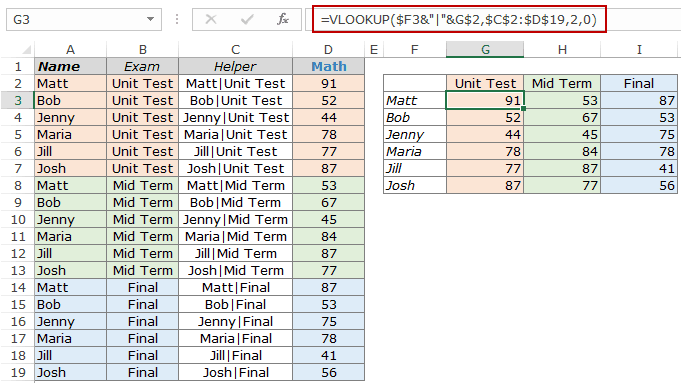Mastering VLOOKUP for Date Ranges: 5 Tips

VLOOKUP is a powerful function in Microsoft Excel that allows users to efficiently retrieve data from large datasets. When working with date ranges, mastering VLOOKUP can significantly enhance your data analysis capabilities. This article provides expert insights and practical tips to help you become proficient in using VLOOKUP for date ranges, ensuring accurate and efficient data retrieval.
1. Understand the Basics of VLOOKUP

Before diving into date ranges, it’s crucial to grasp the fundamentals of VLOOKUP. This function is designed to search for a value in the leftmost column of a table array and return a corresponding value from a specified column in the same row. The basic syntax is as follows:
VLOOKUP(lookup_value, table_array, col_index_num, [range_lookup])
Key components include the lookup_value, which is the value you want to find in the leftmost column of the table array; the table_array, which is the range of cells containing the data you want to retrieve; col_index_num, which specifies the column from which you want to retrieve the data; and range_lookup, which is an optional argument that determines whether an exact or approximate match is required. When working with date ranges, setting range_lookup to FALSE ensures an exact match.
2. Organize Your Data for VLOOKUP

To effectively use VLOOKUP with date ranges, proper data organization is essential. Ensure your data is structured in a way that facilitates easy lookup. Here are some best practices:
- Consistent Formatting: Maintain a consistent format for dates across your dataset. Use a standard date format like mm/dd/yyyy or yyyy-mm-dd to avoid errors.
- Sort Data: Sort your data in ascending order based on the date column. This ensures that VLOOKUP can accurately find the desired date range.
- Unique Identifiers: Include unique identifiers in your dataset, such as transaction IDs or customer IDs, to facilitate accurate data retrieval.
- No Gaps or Duplicates: Avoid gaps or duplicate entries in your date ranges. Ensure that each date is unique and sequential to maintain data integrity.
3. Handle Date Ranges with VLOOKUP
When working with date ranges, you can use VLOOKUP to find and retrieve data within specific date intervals. Here’s how:
3.1 Exact Date Range Match
If you want to find data for an exact date range, use the following formula:
=VLOOKUP(date_range, table_array, col_index_num, FALSE)
Where date_range is a cell containing the start and end dates separated by a colon (:), such as 2023-01-01:2023-03-31. This formula will return the corresponding value from the specified column for the exact date range.
3.2 Partial Date Range Match
In some cases, you may need to find data for a date range that includes a specific date. For instance, you want to retrieve data for any date between January 1st and March 31st, 2023, that falls on a Tuesday. You can use the following formula:
=VLOOKUP(WEEKDAY(date_range,2), table_array, col_index_num, FALSE)
Here, WEEKDAY function returns a number representing the day of the week (1 for Sunday, 2 for Monday, and so on). By using 2 as the second argument, the formula will return TRUE for Tuesdays and FALSE for other days. This approach allows you to find data within a specific date range that meets a certain condition.
4. Combine VLOOKUP with Other Functions
To enhance the flexibility and power of VLOOKUP, you can combine it with other Excel functions. Here are some examples:
4.1 Combining VLOOKUP with COUNTIF
If you want to count the number of occurrences of a specific value within a date range, you can use VLOOKUP in combination with COUNTIF. For instance, to count the number of transactions that occurred on Tuesdays within a given date range, you can use the following formula:
=COUNTIF(VLOOKUP(WEEKDAY(date_range,2), table_array, col_index_num, FALSE), "Tuesday")
4.2 Using VLOOKUP with SUMIF
Similarly, you can use VLOOKUP with SUMIF to calculate the sum of values within a specific date range. For example, to calculate the total sales for a given date range, you can employ the following formula:
=SUMIF(VLOOKUP(date_range, table_array, col_index_num, FALSE), ">0")
5. Troubleshooting VLOOKUP for Date Ranges

While VLOOKUP is a powerful tool, it can sometimes return unexpected results. Here are some common issues and troubleshooting tips:
5.1 VLOOKUP Returns #N/A Error
If VLOOKUP returns a #N/A error, it means that the lookup value was not found in the table array. Ensure that your data is properly organized and that the date range is accurate. Check for any formatting issues or typos in your data.
5.2 VLOOKUP Returns Incorrect Data
If VLOOKUP returns data from the wrong column or row, double-check your col_index_num and ensure that your table array is correctly specified. Also, verify that your data is sorted correctly and that there are no hidden rows or columns that could affect the lookup.
5.3 Handling Large Datasets
When working with large datasets, VLOOKUP can become slow and inefficient. Consider using alternative functions like INDEX and MATCH or exploring Excel’s advanced lookup functions like XLOOKUP or VLOOKUP2, which offer improved performance for large datasets.
Conclusion
Mastering VLOOKUP for date ranges empowers you to efficiently retrieve and analyze data within specific intervals. By understanding the basics, organizing your data effectively, and combining VLOOKUP with other functions, you can unlock the full potential of this powerful Excel tool. Remember to always double-check your formulas and data to ensure accuracy and reliability in your data analysis.
How do I handle multiple date ranges with VLOOKUP?
+To handle multiple date ranges, you can use VLOOKUP in combination with other functions like COUNTIFS or SUMIFS. These functions allow you to specify multiple criteria, including date ranges, and perform calculations accordingly.
Can I use VLOOKUP with dynamic date ranges?
+Yes, you can use VLOOKUP with dynamic date ranges by incorporating Excel’s date functions like TODAY() or EDATE() to automatically update the date range based on a specific condition.
What if I want to retrieve data based on a specific day of the week within a date range?
+To retrieve data based on a specific day of the week, you can use the WEEKDAY function in combination with VLOOKUP. This allows you to find data for a particular day within a given date range.



